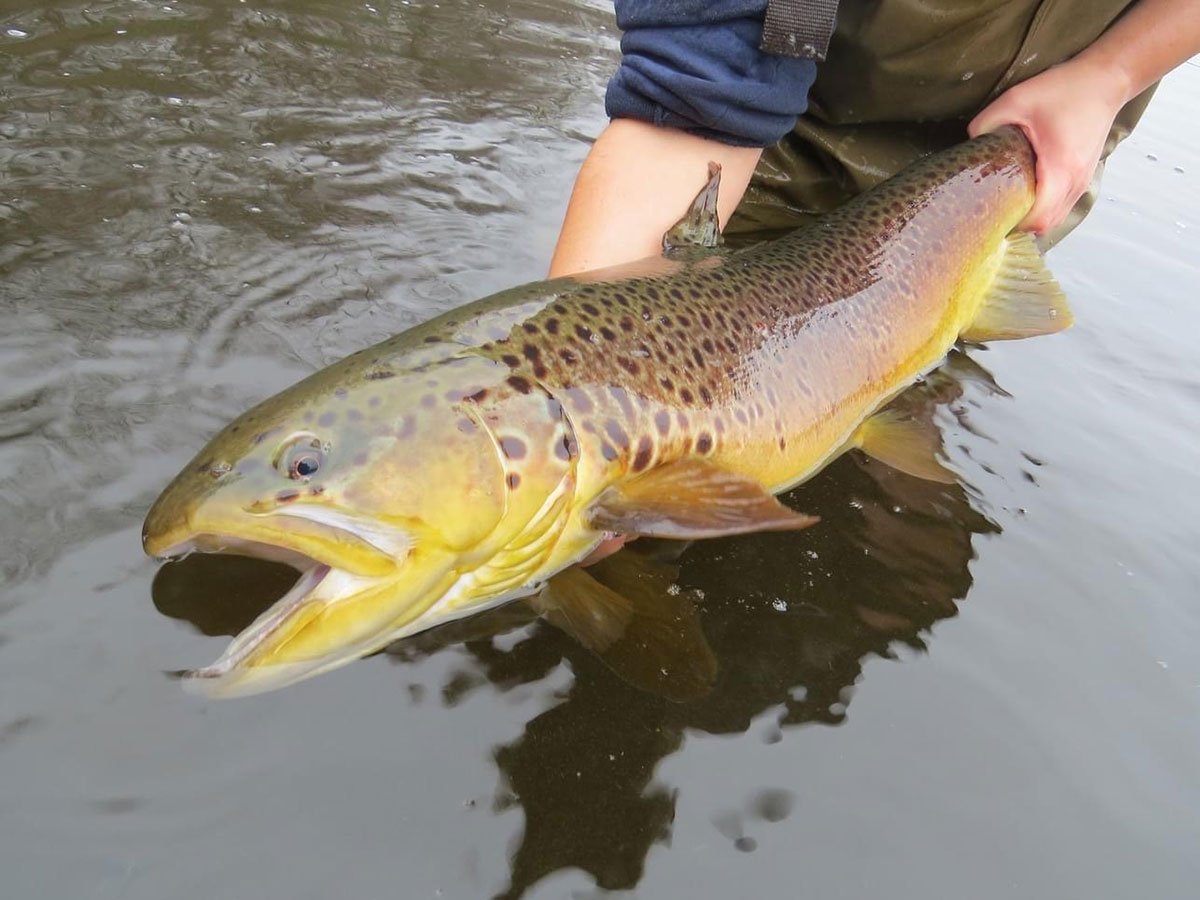
If you like wintertime lake and pond fishing for big brown trout, then this is the time of year for you! CT DEEP’s Fisheries Division has been distributing the Seeforellen strain of brown trout (aka “Seefs”) over the last two months. These are a German strain of large, lake-dwelling brown trout that are capable of reaching very large sizes.
The Fisheries Division has stocked roughly 375 2-year-old fish averaging 5 pounds each, about 3,000 yearlings averaging 1 pound each, and a few dozen three-year-old retired broodstock held over from last year that average a whopping 8 to 10 pounds. Fish spawned at the hatchery provide eggs for future years and are then stocked into nine waterbodies, many of which are Trout Management Lakes with special regulations. You can find the Seefs in the following lakes…
- Beach Pond (Voluntown)
- Black Pond (Middlefield)
- Cedar Lake (Chester)
- Crystal Lake (Ellington)
- East Twin Lake – TML (Salisbury)
- Highland Lake – TML (Winchester)
- Long Pond – TML (N. Stonington, Ledyard)
- Mashapaug Lake (Union)
- Squantz Pond – TML (New Fairfield, Sherman)
- West Hill Pond – TML (Barkhamsted, New Hartford)
In addition to stocking large Seefs in the fall, three lakes receive a total of around 15,000 to 20,000 yearling Seefs in the spring (typically mid-May). East Twin Lake, Lake Wononskopomuc, and Saugatuck Reservoir are stocked as part of a “put-grow-catch” management program. These three lakes are unique in Connecticut because they offer the trout cool, well-oxygenated water even during the hot summer months, and provide suitable forage (alewives) for trout to reach large sizes.
Because these three waterbodies have the potential for fish to holdover well and exhibit fast growth, they are stocked with smaller individuals while the lakes stocked in the fall receive larger fish that are expected to provide an immediate, though possibly shorter-lived, fishery due to habitat and forage limitations.



